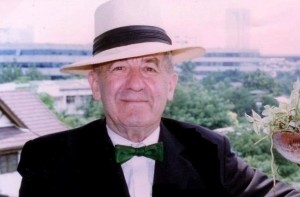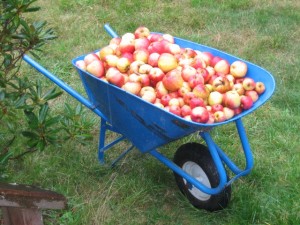(This article appeared in the Anderson Valley Advertiser January 2014)
“Rigid beliefs make disappointments seem unbearable, whereas realistic beliefs help us to accept disappointment and go on from there.” Eileen Kennedy-Moore
We are currently in the midst of a local drought that coincides with a state drought that coincides with a regional drought that coincides with the global climate change crisis that more and more scientists believe is now irreversible and will soon, as in the next decade or sooner, lead to famine, wars, plagues, the death of billions of people, and possibly the extinction of all, or nearly all, life on earth. Darn. There go my books and music being rediscovered five hundred years hence as the great unheralded literary and musical creations of Now. There go all my favorite species of plants and animals, and my favorite people, too. There goes living to a riper old age than the age I eventually live to.
According to even fairly cautious climate change scientists and climate change research institutes, things are beyond dire for human and other life on earth. I wonder if that’s why I’ve been feeling the need to nap more frequently of late. Humans have never lived on a planet with so much carbon dioxide in the atmosphere, and maybe this excessive amount of carbon dioxide induces drowsiness. According to many of these same scientists, the only hope of slowing and reversing climate change and the disastrous effects of that change—an extremely slim hope at best—would be for all fossil-fuel-dependent societies to entirely collapse, which would result in the cessation of fossil fuels being burned, which would quickly lead to famine, wars, plagues, and the deaths of billions of people, but maybe not the extinction of all, or nearly all, life on earth. I say maybe not because of those hundreds of pesky nuclear power plants all over the world that require enormous amounts of electricity and functional infrastructures to keep those tens of thousands of nuclear fuel rods cool (even when the plants are no longer operating) so they don’t melt down and explode and radiate the entire earth.
For the time being, Marcia and I have plenty of water for our minimal water needs, but if the current drought were to turn into a multi-year drought, which it very well might given that local, state, national and global weather patterns are wonkier and crazier and more extreme than ever before, what would we and the other people in Mendocino do for water? Thinking about what we would do in response to a local catastrophe is an interesting (and scary) way to start thinking about what humans will do en masse in response to such catastrophes that are occurring with more and more frequency around the world.
I suppose if most of the people around here couldn’t get enough water to lead minimally decent lives, most of the people around here would try to go elsewhere, assuming there were relatively safe and affordable ways to go elsewhere and there were other places with plenty of water and housing and employment for thousands of people from here and millions of people from other drought-stricken places. You see where I’m going with this. Without enough water, our entire local and state and national economy and society would be kaput. And according to climate change scientists, not enough water is soon going to be reality for billions of people on earth—very soon. So where will all those people go?
To put the current drought in historical perspective, 2013 was the driest year in California in at least 165 years. That is to say, humans started keeping records of rainfall hereabouts in 1848, and since then there has never been a drier year than the year just ending, with not a drop more rain predicted for Mendocino and most of California in the few days remaining in 2013. Mendocino’s rainfall total for the entire calendar year will end up being less than fifteen inches. Our historical average here on the coast is fifty-one inches a year. Let us hope that January and February prove to be fabulously wet months, though we got less than two inches of rain all of last January and February.
Before he died in 2000, Marc Reisner, the famous writer about the history of water in California, predicted that water would become so scarce in California over the coming years that at least half of California’s thirty-eight million human residents would be compelled to go eastward, far eastward, to the New York side of the Mississippi River where rain continues (currently) to fall in abundance. However, Marc was not privy to the current computer models suggesting that most of the interior of the United States will be too hot for human habitation in another ten to twenty years, so those twenty million Californians will not only have to go east, but north. Yet north is…Canada. No problem. Canada has tiny army. America has big army. We conquer Canada for their land and water resources and then several million lucky former Americans will go up there to live.
Sound farfetched? Consider this. Swiftly changing weather patterns in Spain (population 47 million) suggest that the climate and amount of rainfall in the Iberian Peninsula will soon resemble that of present-day Algeria, which means most of those Spanish people will have to head north to find enough water and food to survive. But wouldn’t you know it, France and 66 million French people are already there.
A friend recently sent me a link to a slideshow of shocking photographs of three huge Chinese cities: Beijing, Shanghai, and Chengdu. These pictures appear to have been taken on moonless nights, when, in fact, they were taken on sunny days when the smog was so thick that no sunlight could penetrate the dense black air. So toxic is the air in these cities that for many days of the year children and elderly people are not allowed outside. Hundreds of flights a week are canceled at the international airports servicing these cities, yet the people and governments of these cities do nothing to address the terrible problem, though China says they will begin taking steps to slowly shift away from burning coal as their primary means of producing energy. However, for now and the foreseeable future, the people in these cities will live (for as long as they can) with the deplorable situation because the alternative, in the short term, would be the loss of jobs and a slowing of economic growth.
I mention these terrifying images from China because I feel that we, the American people and American government, are doing essentially nothing to address the terrible problem of climate change that has so severely darkened the future of life on earth. What will it take before we realize that our individual actions multiplied by hundreds of millions of us are the cause of these terrible overarching problems? When I look at those pictures of tens of millions of Chinese people trying to live in atmospheres black with poison, I think the answer must be that most of us will never realize we are the source of the problem because we have lost our natural connections to the earth and to the fabulously interconnected processes that make life on this precious planet possible.
Despite (or maybe because of) the dismal prognosis for life on earth, I’ve been having vivid dreams lately (and remembering them) in which I am confronted with seemingly unsolvable puzzles and insurmountable obstacles, yet I somehow manage to solve the puzzles and surmount the obstacles and wake up feeling optimistic, if not about the future of humanity and the planet, then about the next few hours and the possibility I may learn something or write something or play something on the piano or have a conversation with someone or plant a seed or have a vibrant thought that sparks a reaction from Universe or at least gives me the feeling I may have sparked a reaction from Universe.
Wishful dreaming? What am I talking about? I’m talking about why I continue to write a weekly article and novels and music in the face of the unsolvable puzzles and insurmountable obstacles that may soon render me and every other breathing and photosynthesizing thing dead. I am not in denial of what is happening to the earth, yet I continue to believe that for however long we are alive, our purpose is to consciously interact with Universe in loving and creative ways. Universe, so say my teachers, loves for us to take creative regenerative actions, because Universe, more than anything, loves to respond to what we do. I know I’m anthropomorphizing Universe by endowing her with the ability to love. So sue me. Happy New Year!


